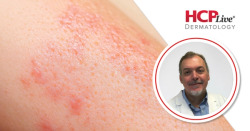
OR WAIT null SECS
Large Prevalence of Dermatoses in Obese Pediatric Patients
A greater prevalence of hidradenitis suppurativa, psoriasis, folliculitis, and hirsutism in pediatric patients with obesity compared to the general pediatric population.
A large prevalence of dermatoses was seen in a new investigation regarding pediatric patients with obesity, which investigators noted was in line with previous studies linking obesity to dermatoses in adult and pediatric populations.
Notably, investigators saw a greater prevalence of hidradenitis suppurativa, psoriasis, folliculitis, and hirsutism in pediatric patients with obesity compared to the general pediatric population.
Though obesity has long been considered a worldwide epidemic, especially considering the increasing prevalence in pediatric populations, skin manifestations related to obesity have not been thoroughly considered.
As such, an investigative team led by Mohammed Albaghdadi, MPA, Temerty Faculty of Medicine at the University of Toronto, prospectively evaluated skin manifestation of obesity in a cohort of children and its affect on dermatologic quality of life.
The team conducted the study at the SickKids Team Obesity Management Program (STOMP) clinic in The Hospital for Sick Children in Toronto from July 2017 and July 2020.
Eligible participants were 6 months to 19 years of age and had a BMI above the 97th percentile for age and sex according to the World Health Organization. Obesity was defined as a BMI above the 97th percentile while overweight was defined as a BMI above the 8th percentile.
Investigators collected anthropometric data, medical history, routine blood investigations, and current medication prior physical and dermatologic exams. Meanwhile, quality of life was measured via the Children’s Dermatology Quality of Life index (CDLQI) and dermatology quality-of-life index (DLQI), the latter of which was administered to teenagers.
A total of 91 patients were recruited to participate, with 1 being removed for having normal BMI. Among the remaining patients, 88 (98%) were obese and 2 were overweight.
The mean DLQI/CDLQI was 2, and all participants had at least 1 skin condition on inspection with a median of 3 skin conditions, with the most common distribution of lesions being on the neck (85%) and axilla (75%) for acanthosis nigricans.
Regarding skin conditions, acne was predominantly located on the face (92%), and hidradenitis suppurativa was frequently found on the groin (67%) and axilla (56%), and 60 (66%) patients were prescribed a medication due to their skin problem following their assessment.
Though the study lacked a control group, investigators noted that the large prevalence of dermatoses in pediatric patients with obesity tracked with previous studies on obesity and dermatoses in adult and pediatric populations.
"Our findings highlight the increased prevalence of certain derma-toses in children with obesity and thus emphasize the importance ofongoing monitoring for skin problems in this population," the team wrote.
The study, "Skin manifestations in pediatric obesity: A prospective cohort study," was published online in Pediatric Dermatology.


